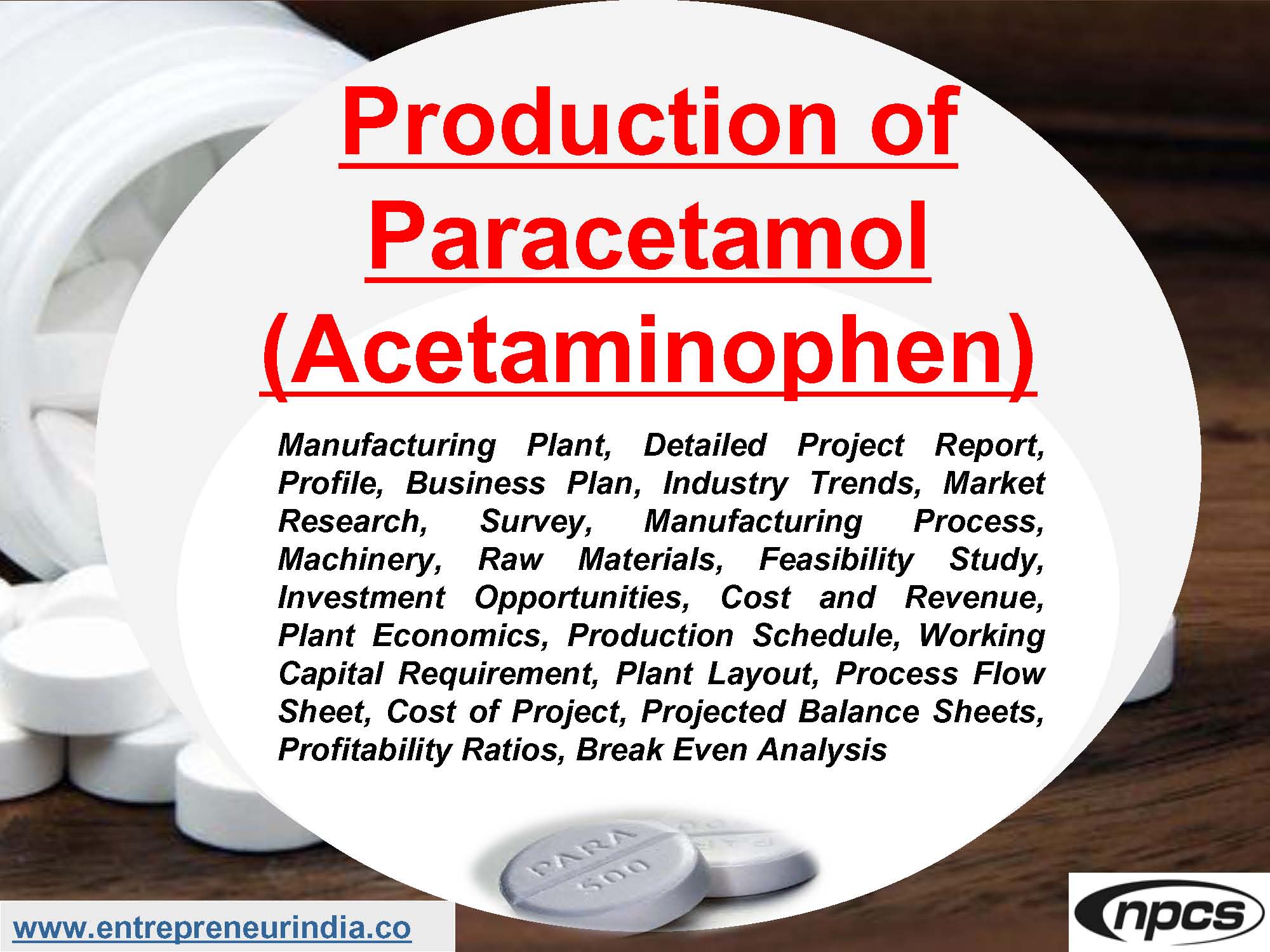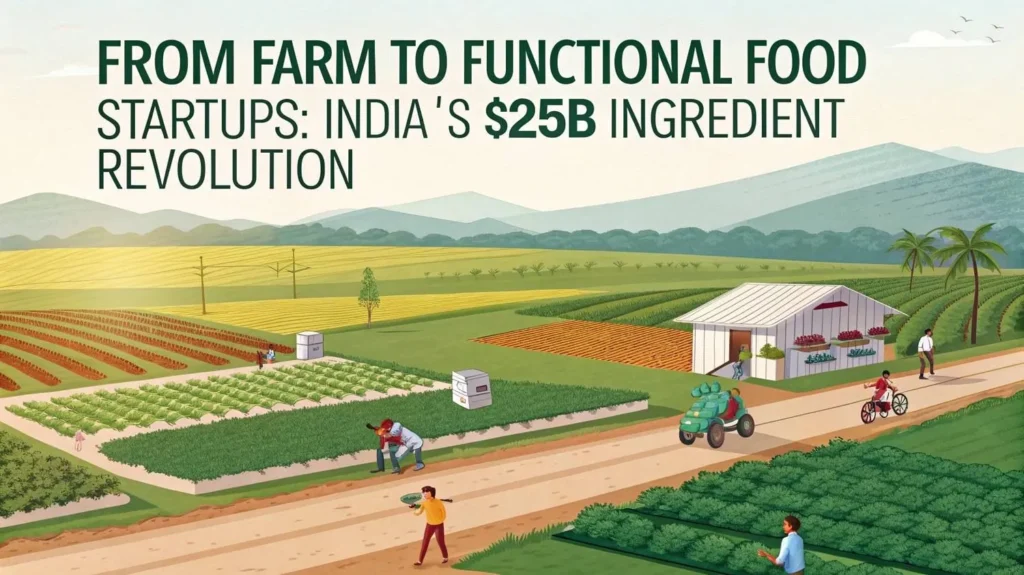
Paracetamol is one of the most widely used over-the-counter (OTC) medicines across the globe. Known for its analgesic and antipyretic properties, it is commonly used to relieve mild to moderate pain and reduce fever. As a result, the demand for paracetamol remains steady throughout the year in both domestic and international markets. Entrepreneurs and pharmaceutical companies looking to invest in the healthcare sector can find significant opportunities in this domain. However, to start a successful unit, one must understand the complete process of Paracetamol Manufacturing—right from plant setup to regulatory compliance and DPR (Detailed Project Report) creation.
Paracetamol Manufacturing Plant | Setup & DPR Guide
Establishing a paracetamol manufacturing plant involves meticulous planning, adherence to pharmaceutical regulations, and investment in high-quality machinery and infrastructure. Here’s a detailed breakdown of the steps involved in setting up a successful manufacturing unit.
Read Also :How to Manufacture Fruit Juice
Market Potential and Industry Scope
Paracetamol, also known as acetaminophen, has been a staple drug in every pharmacy for decades. It is listed on the World Health Organization’s list of essential medicines. Its demand is not limited to retail markets—it is also supplied to hospitals, clinics, government tenders, and institutional buyers.
Moreover, paracetamol is often used as a base ingredient in combination drugs, such as cold and flu medications. Its widespread acceptance, minimal side effects, and affordability make it a high-demand product across all economic segments.
With increasing healthcare awareness, growing populations, and seasonal illness spikes, the market for paracetamol shows no sign of slowing down. As a result, Paracetamol Manufacturing offers a recession-proof business model with excellent scalability.
Raw Materials Required
The key raw materials required for Paracetamol Manufacturing include:
-
P-Aminophenol (PAP) – Primary starting material
-
Acetic Anhydride – Used for acetylation
-
Activated Carbon – For decolorization
-
Solvents – For the purification process
-
Hydrochloric Acid and Caustic Soda – For pH adjustment
Water (preferably purified or distilled) is used throughout the process. Moreover, depending on the dosage form (tablet, syrup, or suspension), you will also require excipients like binders, disintegrants, lubricants, and coating agents.
Ensuring the purity and quality of raw materials is essential to produce pharmaceutical-grade paracetamol that meets global standards.
Manufacturing Process of Paracetamol
The Paracetamol Manufacturing process generally follows a well-defined sequence:
-
Reaction
P-Aminophenol is reacted with acetic anhydride in a reactor to form paracetamol through an acetylation process. The reaction is controlled under specified temperature and time conditions to ensure maximum yield. -
Crystallization
After the reaction is complete, the solution is cooled to initiate the crystallization of crude paracetamol. This helps in separating the active ingredient from the reaction mixture. -
Filtration and Washing
The solid paracetamol is filtered and washed to remove impurities, unreacted chemicals, and solvents. -
Drying
The washed crystals are dried using tray dryers or vacuum dryers until the required moisture level is achieved. -
Purification
The dried paracetamol may be purified using solvents and activated carbon to improve color and remove residual impurities. -
Milling and Sieving
The purified material is milled and sieved to achieve uniform particle size. -
Final Blending and Packing
The API (Active Pharmaceutical Ingredient) can be packed directly or sent for formulation into tablets, capsules, or syrups.
Moreover, maintaining a clean and controlled environment at each stage is critical to meet cGMP (current Good Manufacturing Practice) norms.
Equipment and Machinery Setup
Setting up a Paracetamol Manufacturing plant requires pharmaceutical-grade machinery. Core equipment includes:
-
Stainless steel reactors with temperature control
-
Crystallizers and agitators
-
Filtration and centrifuge systems
-
Tray or vacuum dryers
-
Milling and sieving units
-
Purification tanks
-
Blenders and packing machines
Moreover, HVAC systems, water purification units, and dust extraction systems are essential for maintaining a sterile production environment.
The plant layout should follow a linear workflow—from raw material entry to finished goods exit—to avoid cross-contamination and ensure operational efficiency.
Creating a Detailed Project Report (DPR)
A well-prepared DPR is the foundation for building a compliant, profitable, and sustainable manufacturing facility. The DPR for Paracetamol Manufacturing should include:
-
Executive Summary: Overview of the business, objectives, and expected outcomes
-
Market Analysis: Demand trends, competitor mapping, target regions
-
Manufacturing Process: Step-by-step process with flow diagrams and controls
-
Plant Layout: Space utilization, room classifications (cleanroom, storage, QC lab)
-
Machinery List: Detailed specifications and capacities
-
Regulatory Requirements: Licenses, pollution control norms, GMP certifications
-
Financial Projections: Break-even analysis, working capital needs, return on investment
-
Risk Analysis: Market risks, operational risks, and mitigation plans
Moreover, attaching quotations from machinery suppliers and raw material vendors lends credibility to your DPR when seeking finance or partnerships.
Regulatory and Licensing Requirements
Pharmaceutical manufacturing is a highly regulated industry. Before starting operations, you must obtain the following approvals:
-
Drug Manufacturing License under the Drugs and Cosmetics Act
-
GMP Certification to meet safety and quality standards
-
Environmental Clearance from the pollution control board
-
Factory License and registration under MSME/Udyam
-
Fire and Safety NOC
-
GST Registration and local trade licenses
Moreover, maintaining proper documentation, SOPs (Standard Operating Procedures), and quality assurance protocols is mandatory for regulatory inspections and audits.
Quality Control and Testing
Every batch of paracetamol must undergo strict quality testing before it reaches the market. Key tests include:
-
Assay (purity) testing
-
Identification and appearance
-
Loss on drying
-
Residual solvents
-
Heavy metal analysis
-
pH and solubility
In addition, microbiological testing and stability studies are essential if you’re producing final dosage forms like tablets or syrups.
Moreover, establishing an in-house Quality Control lab helps ensure continuous monitoring, faster release of products, and compliance with regulatory bodies.
Formulation Opportunities
While Paracetamol Manufacturing primarily refers to producing the active pharmaceutical ingredient (API), you can also expand into formulation units. Some popular dosage forms include:
-
Tablets (500 mg, 650 mg)
-
Syrups (for pediatric use)
-
Suspensions
-
Effervescent powders
-
Combination drugs (e.g., paracetamol + caffeine, or paracetamol + ibuprofen)
This opens up more revenue streams and allows for brand development. Moreover, contract manufacturing and third-party formulation services can further diversify your business.
Storage and Packaging
Proper storage conditions are essential to maintain the stability and efficacy of paracetamol. The final product should be stored in:
-
Dry, cool areas with temperature monitoring
-
Airtight containers or moisture-resistant packs
-
Well-labeled and batch-segregated zones
Packaging must comply with pharmaceutical labeling regulations, including:
-
Generic name and dosage strength
-
Batch number and manufacturing date
-
Expiry date
-
Storage conditions
-
Manufacturer’s name and license number
Moreover, using tamper-evident and child-resistant packaging enhances consumer trust and regulatory compliance.
Sales, Marketing, and Distribution
Building a strong sales network is essential to succeed in Paracetamol Manufacturing. You can target:
-
Wholesalers and stockists
-
Hospitals and nursing homes
-
Government tenders and institutional buyers
-
Retail pharmacies and chains
-
Online pharmacies and marketplaces
Participating in pharma expos, conferences, and digital platforms helps increase brand visibility. Moreover, obtaining WHO-GMP and other international certifications can open up export opportunities.
See Also :Start Sugarcane Juice Preservation & Bottling Plant
Conclusion
Paracetamol Manufacturing offers a reliable and scalable business model in the pharmaceutical sector. With continuous demand, simple formulations, and wide applications, it presents an ideal entry point for entrepreneurs in the healthcare industry. However, setting up a plant requires strategic planning, regulatory approvals, quality control systems, and a well-structured DPR. Moreover, maintaining compliance with pharmaceutical standards ensures product safety, builds customer trust, and enables market expansion. By investing in the right technology, infrastructure, and talent, you can establish a successful paracetamol manufacturing unit that delivers long-term growth and impact.




